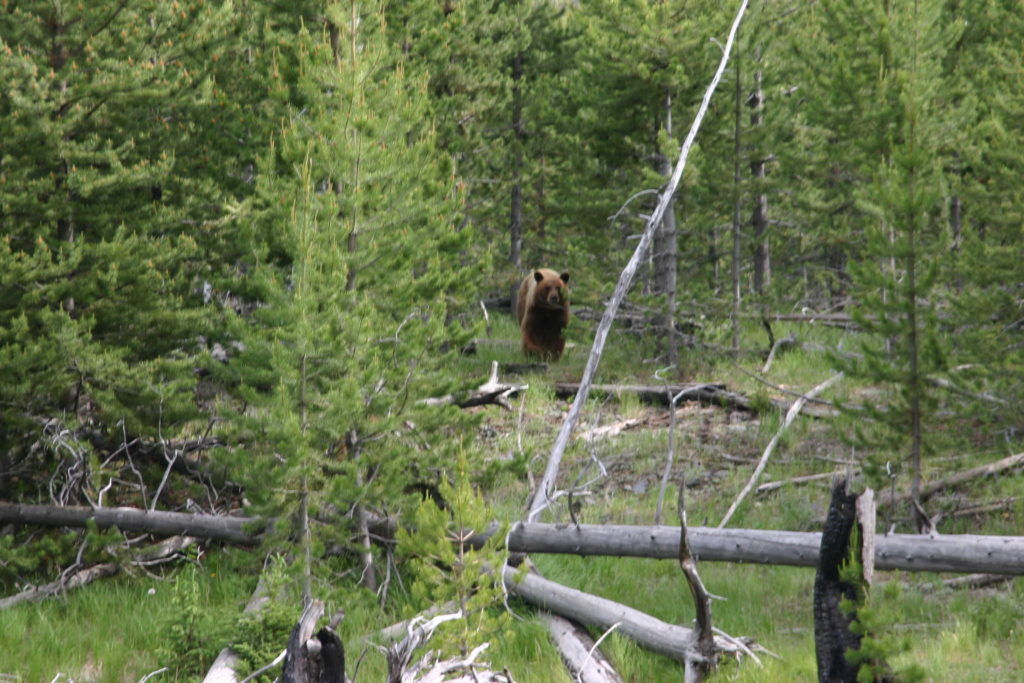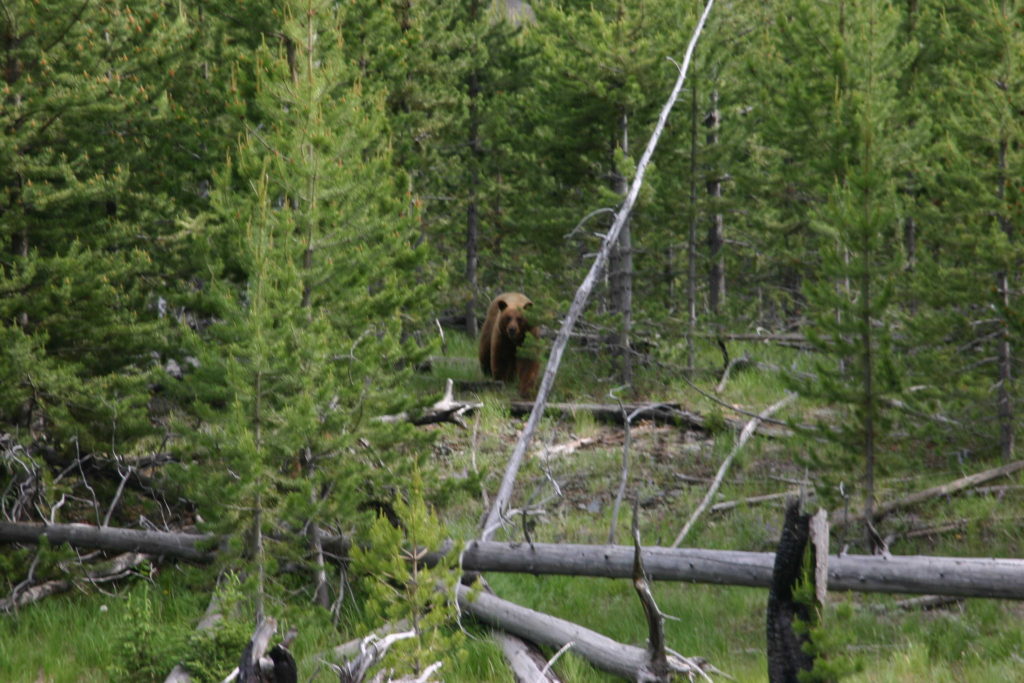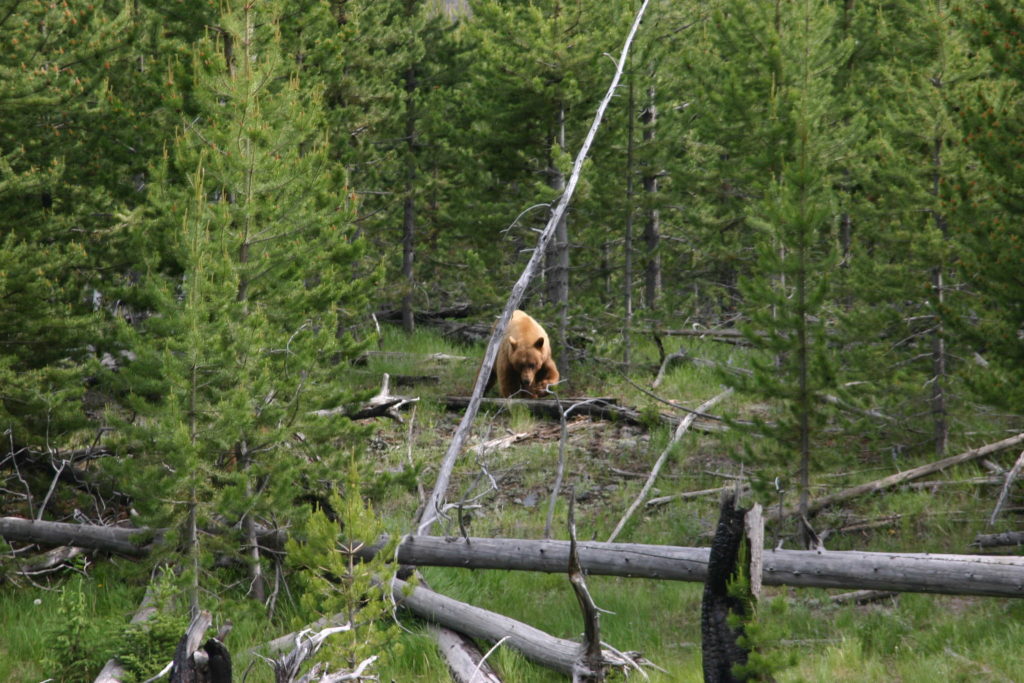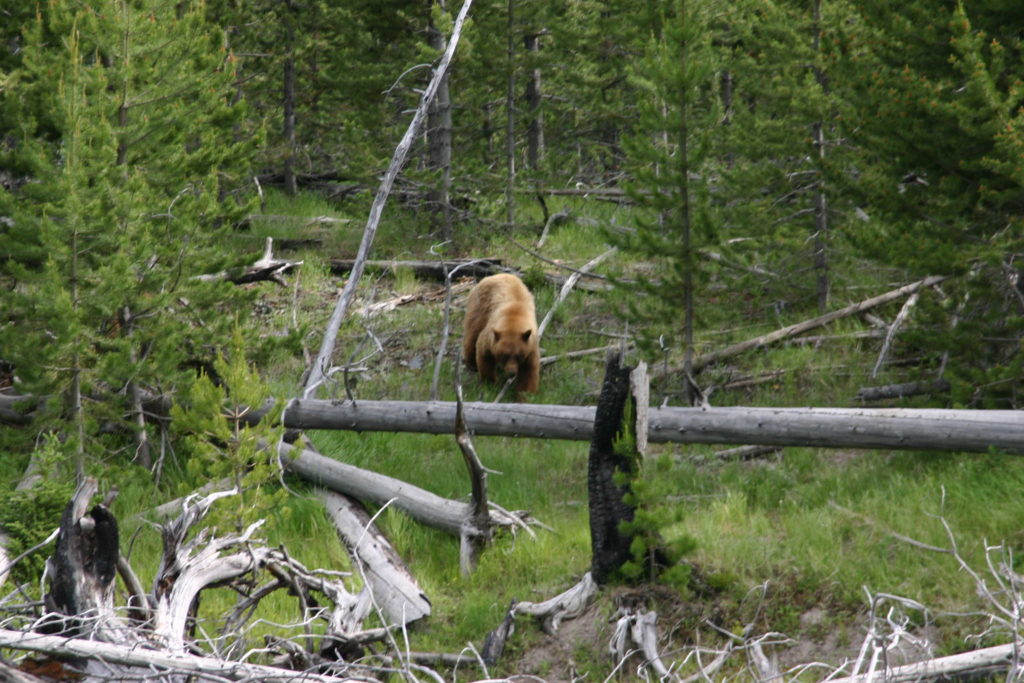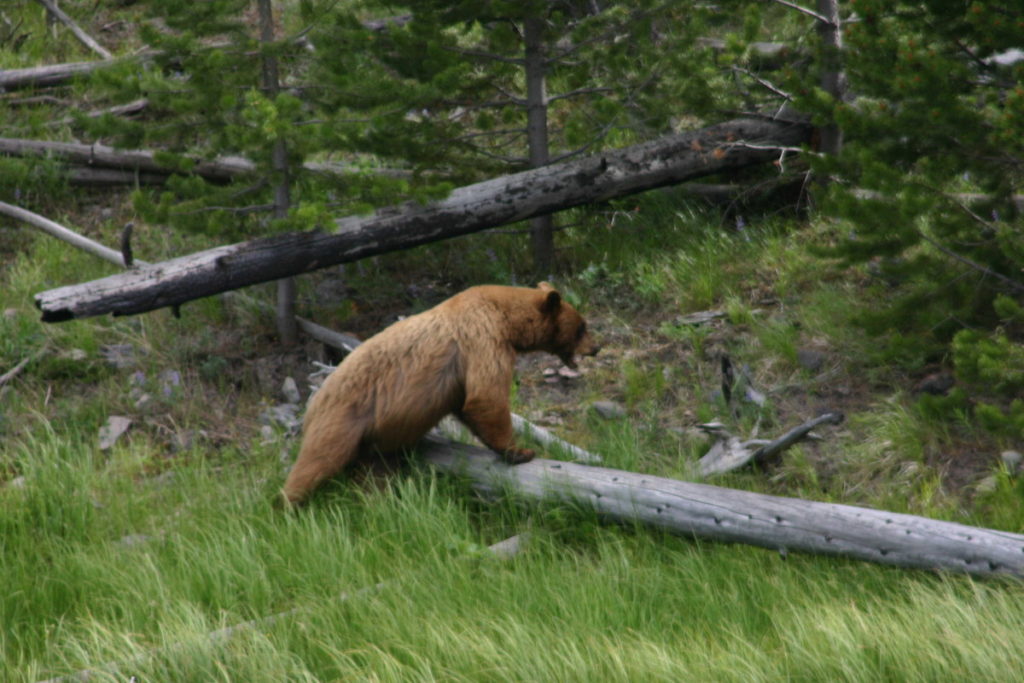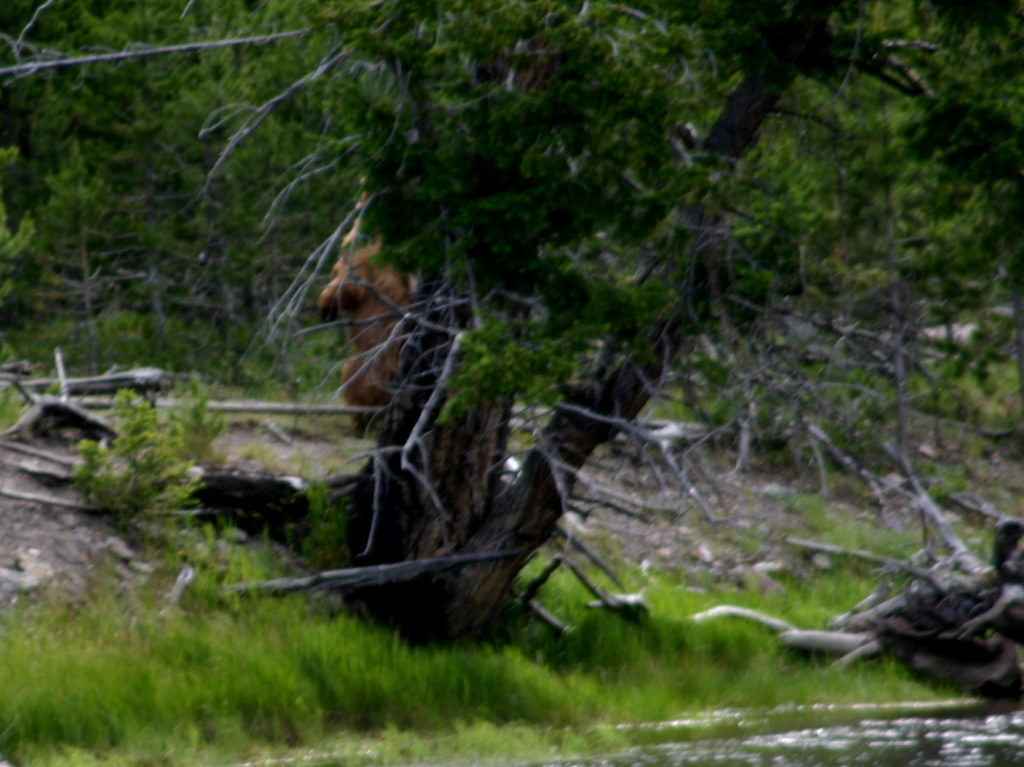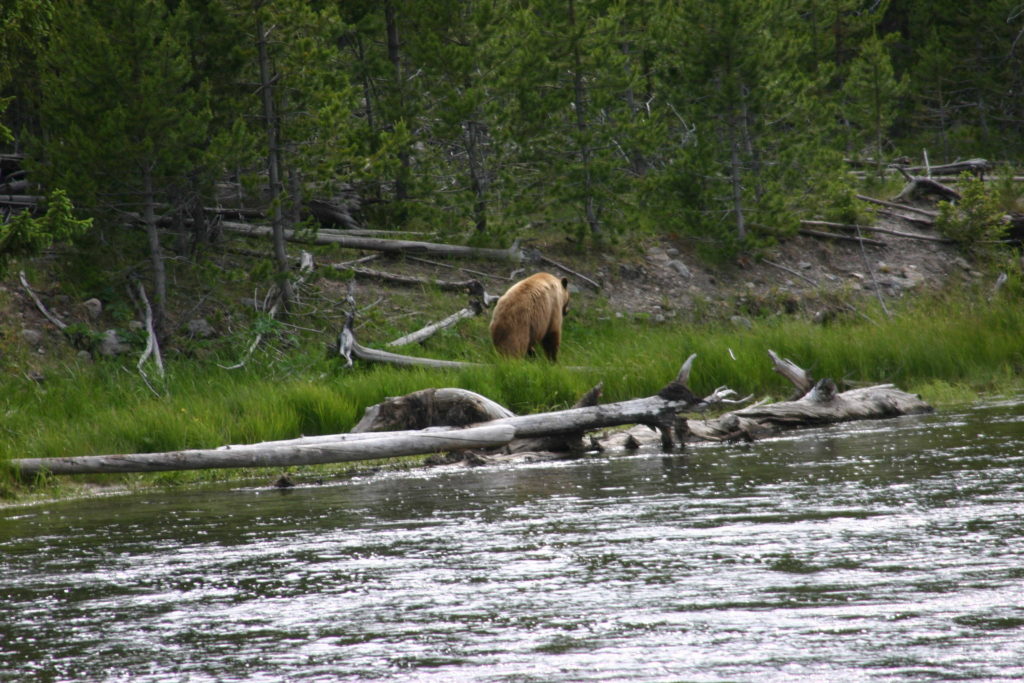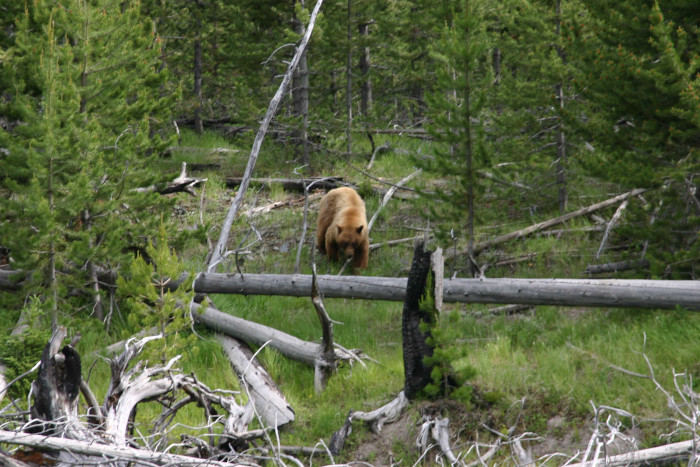During our visit to Yellowstone we were blessed to see bears on three separate occasions, one of which was much closer than we could have expected. As you can see, the first picture was from over 100 yards. After the camera clicked, the bear heard the noise and clearly caught a scent. He came close to check me out – but changed his mind after all when he was about 100 feet away. The gallery below captures the entire event, from the time the bear first headed my way to the time he calmly walked away, heading downstream to stand up and scratch his back on a tree.
Here’s some information about the bears at Yellowstone to go along with the gallery.
An estimated 600 grizzly bears live in the Greater Yellowstone Ecosystem. Black bears are common in the park and were a park symbol due to visitor interaction with the bears starting in 1910. Feeding and close contact with bears has not been permitted since the 1960s to reduce their desire for human foods.[100] Yellowstone is one of the few places in the United States where black bears can be seen coexisting with grizzly bears.[100] Black bear observations occur most often in the park’s northern ranges and in the Bechler area which is in the park’s southwestern corner.[101]
What’s the difference between a grizzly and a black bear?
Grizzlies have a hump on their upper back, a rump lower than their shoulders, a ruff of long fur and long claws. Males weigh between 200 and 700 pounds, while females weigh between 200 and 400 pounds. The bears are surprisingly fast, able to run up to 45 miles per hour, and climb trees, although their weight makes this getting up high somewhat difficult. They live up to 30 years. South of Canada, large populations of grizzlies are only found in the Greater Yellowstone Ecosystem and northwest Montana. A single bear will roam over hundreds of square miles.
Grizzly bears are not afraid of humans and are more aggressive than black bears.
Black bears are smaller than grizzlies, with males weighing between 210 and 315 pounds and females weighing between 135 and 200 pounds. Not all black bears are black. Some are brown or blonde. They eat rodents, insects, elk calves, cutthroat trout, pine nuts, grasses and other vegetation and have short, curved claws, making them expert climbers.
Yellowstone is one of the few areas south of Canada where black bears coexist with grizzlies.
What are the odds of seeing a bear on your Yellowstone visit?
Not too bad. Visitors reported more than 40,000 bear sightings between 1980 and 2011. Most grizzly sightings occur at night, dawn and dusk during the spring and early summer. Grizz are most often seen in the Lamar Valley, Gardiners Hole, Antelope Creek meadows, Dunraven Pass, Hayden Valley, and in the wet meadows along the East Entrance Road from Fishing Bridge to the East Entrance of the park. Hoping to see a black bear? Your odds of seeing these smaller bears improve during the daytime, especially when you’re in the northern part of the park along the road between Elk Creek and Tower Falls, on the stretch from Mammoth Hot Springs north to Indian Creek, or in the Bechler region in Yellowstone’s southwest corner.
Sources: MyYellowstonePark.Com and the Wikipedia page for Yellowstone National Park.

